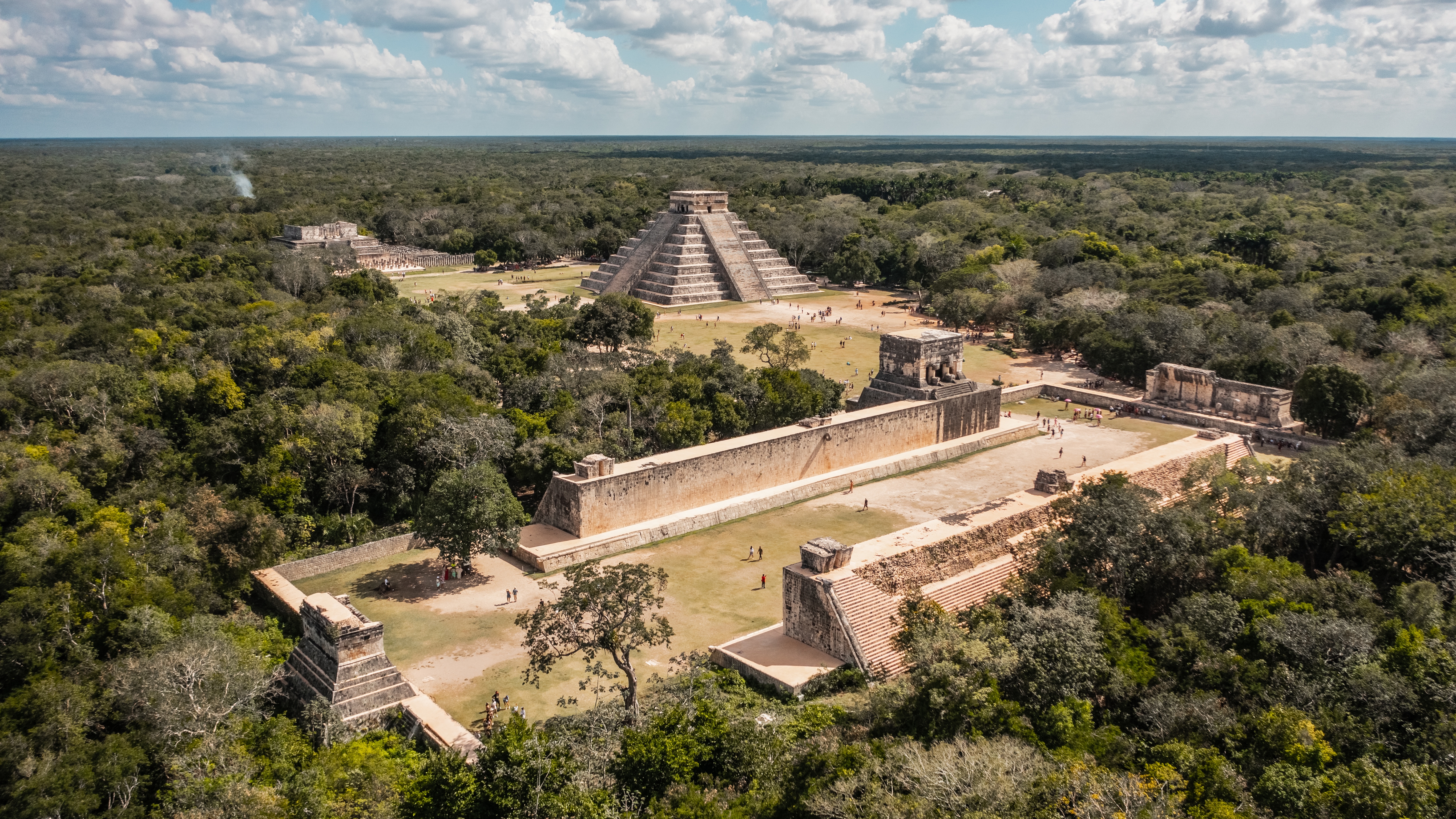At the bottom of the “Sacred Cenote” in Mexico sits a layer of ancient treasure consisting of gold artworks, beautifully carved jade plaque, and human remains. These relics were not carelessly discarded but deliberately offered to the gods, chunked into the sinkhole as if it were a portal to the watery underworld.
ADVERTISEMENT GO AD FREE
The “Sacred Cenote” is one of several water-filled sinkholes found near the large ancient city of Chichen-Itza on the Yucatán Peninsula, Mexico. This iconic city, complete with grand pyramids and elaborate temples, was founded in the fifth century CE. It flourished for nearly a millennium before the European conquest and colonization led to a devastating decline in the Maya population.
Geologically, the Yucatán Peninsula is basically a big chunk of porous limestone. Beneath lies an underground network of natural tunnels that were carved out through slightly acidic rainwater that seeped into cracks in the limestone bedrock, forming channels and caverns. The ceiling of some of these passages has caved in over time, creating these gaping sinkholes.
Through numerous archaeological surveys and dredging excavations in the 20th century, it’s been estimated that over 30,000 artifacts are within the cenote, including gold, jade, copper, turquoise, obsidian, copal or incense, pottery, rubber, shells, and animal bones.

The Sacred Cenote is a short walk away from Chichen-Itza, a large pre-Columbian city and UNESCO World Heritage Site.
Image credit: Aleksandr Medvedkov/Shutterstock.com
It’s not common to discover precious metals in Maya tombs, but they are abundant in the Sacred Cenote. Researchers have noted the sinkhole contains a rich variety of gold and copper objects, including some that appear to have been imported from Costa Rica and Panama. Along with figurines and bells, some of the most impressive gold artifacts are disks that have been hammered until they were paper-thin and engraved in mythological scenes.
Among the littering of metallic artifacts, the skeletal remains of at least 200 ritually sacrificed individuals can be found. Many date to around 500 – 900 CE and they are primarily children, some of whom exhibit signs of deliberate skull shape modification.
Sensational accounts from 16th-century conquistadors fuelled the belief that the site was primarily a place of sacrifice for young women and girls. However, recent scientific studies have revealed the remains belonged to both males and females.
ADVERTISEMENT GO AD FREE
Just like the physical ornaments, these humans came from far and wide across the Maya civilization. A study in 2019 analyzed the strontium and oxygen isotopes of some of the bones and teeth to identify their place of origin, concluding that “individuals in the cenote came from a number of different parts of Mexico and possibly beyond.”
These discoveries make it easy to imagine the cenote as a pilgrimage site, famous across the land and attracting spiritually minded travelers from far-flung regions.
Modern observers can only speculate on how the Maya viewed this geological feature, but it’s evident they regarded these waters as far more than a natural wonder. To them, the Sacred Cenote was a doorway to the divine – a bridge uniting their world, their environment, and the realm of the gods.
Source Link: Filled With 200 Skeletons, Mexico's Sacred Cenote Was A Gateway To The Gods